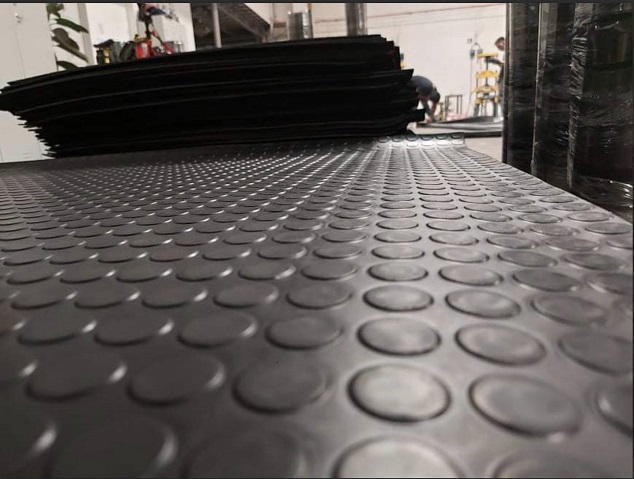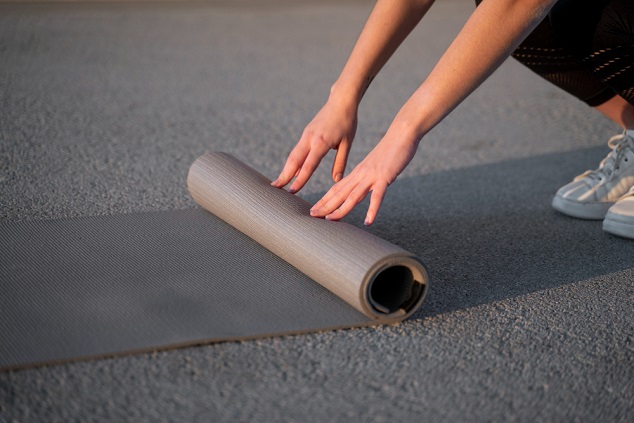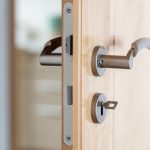Contents
The need for reliable flooring solutions in homes, schools, offices and public venues continues to grow as Australians prioritise safety, comfort, and resilience in their daily environments. No longer an afterthought, the surfaces beneath our feet play a crucial role in ensuring health and well-being, providing a barrier against slips, dirt, and mechanical wear.
In recent years, rubber mats have emerged as a frontrunner among flooring choices due to their impressive features and adaptability. Whether it is a bustling kitchen, a busy foyer or a crowded workplace, selecting the right matting is fundamental for both functional and aesthetic reasons.
The Versatility of Rubber Mats

Rubber mats stand out due to their exceptional versatility, finding use in both indoor and outdoor settings, including residential, retail, and industrial environments. Designed to withstand the challenges of moisture, high traffic, and shifting temperatures, these mats are a reason for their popularity in numerous applications. Anti-slip features are a key advantage: surface textures and high friction coefficients minimise accidents in spaces prone to spills or wet conditions, while robust construction stops mats from curling or bunching even under strenuous use.
Additionally, rubber mats are valued for their impact absorption; they cushion heavy footsteps and provide much-needed relief when placed beneath gym equipment, workbenches, or furniture. Their natural insulating properties make them useful for keeping areas quieter, especially in multi-unit dwellings or offices where noise carries easily.
Rubber mats are available in several styles, from classic door mats that keep mud outside to ergonomic designs tailored for workplaces where staff spend hours standing. Mats with closed-cell structures offer high resistance against stains, chemicals, oils, and water damage, meaning they remain effective even when placed under demanding industrial conditions.
Many varieties, such as interlocking mats and rolled mats, let users customise their floor coverage, ensuring that no corners or awkward spaces are left unprotected. In comparison to alternatives like PVC flooring, rubber provides greater durability, slip resistance and long-term cost savings due to its ability to hold shape and surface qualities far longer.
Protecting and cushioning yourself with the right rubber mats will serve you well for years to come, providing peace of mind while also making tidying up and floor maintenance easier than ever.
Selecting the Best
Knowing what makes a mat suitable for a specific environment is essential. Rubber mats can be made from several different compounds, including natural rubber, nitrile, and EPDM, all chosen for their specific physical properties. Natural rubber excels in flexibility and slip resistance, while nitrile outperforms in areas exposed to oils and chemicals due to its exceptional strength.
EPDM is favoured for outdoor use, resisting UV rays, rain and extreme temperatures without cracking or fading. Understanding the static coefficient of friction is important: most safe mats rate between 0.5–0.8, significantly reducing the risk of falls even when surfaces are wet or oily.
Thickness and density play a vital role in how a mat performs. Thicker mats absorb greater shock and are particularly useful in gyms, garages, or commercial kitchens where heavy objects are frequently dropped. For locations with lighter use, low-profile mats strike a balance between safety and unobtrusive appearance.
Environmental sustainability is another benefit since many modern mats are made from recycled materials and can be fully recycled at the end of their lifespan, making them a planet-friendly choice. Maintenance is simple: cleaning with warm water and mild detergent keeps mats looking clean while retaining surface traction over years of use. By matching the right material and features to the environment, users increase both safety and comfort without compromising on style.
Comfort and Protection for All Needs
One of the greatest benefits of a rubber mat is how it enhances comfort, especially for those who spend extended hours standing. Anti-fatigue mats encourage small muscles in the legs and feet to adjust constantly, improving circulation and reducing aches and fatigue, making them especially popular in retail counters, medical clinics and food prep areas. Studies have shown that businesses employing anti-fatigue mats report decreased injury rates and greater productivity, as staff feel more supported and less strained.
Exploring Options and Tips for Choosing

Choosing the perfect mat depends on assessing each space’s unique requirements and matching products accordingly. For homes and offices, opt for mats with easy-to-clean surfaces and neutral colours; in high-traffic public spaces, select models designed for intense wear and longer lifespans. Mats can be installed as single pieces or connected for complete coverage, adapting to complex room layouts and challenging corners. When placing mats near entryways or in wet areas, textured surfaces with high friction should be prioritised.
Here are practical tips to optimise mat selection and use:
- Inspect mats regularly for signs of wear or curling to ensure continued safety.
- Avoid harsh chemicals; mild detergents extend lifespan and protect surface grip.
- Rotate mats between high- and low-traffic areas to balance longevity.
- Consider eco-friendly options that can be recycled at the end of use.
Practical Benefits for Everyday Life
Rubber mats have reshaped how Australians think about flooring, combining essential features like safety, comfort, noise reduction, and sustainability into a single product adaptable to any setting. From busy restaurants to winding outdoor paths, these mats serve as quiet protectors and comfort enhancers that keep spaces cleaner, safer and better for everyone. By choosing with care and focusing on environments and needs, users gain practical, cost-effective solutions that continue to perform over time. Rubber mats remain a top choice for those seeking reliable, versatile, and eco-conscious flooring in contemporary Aussie life.





Comments are closed.